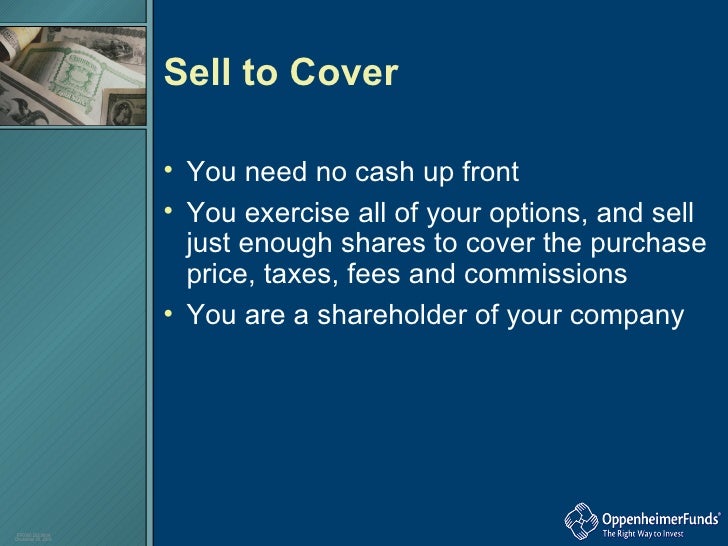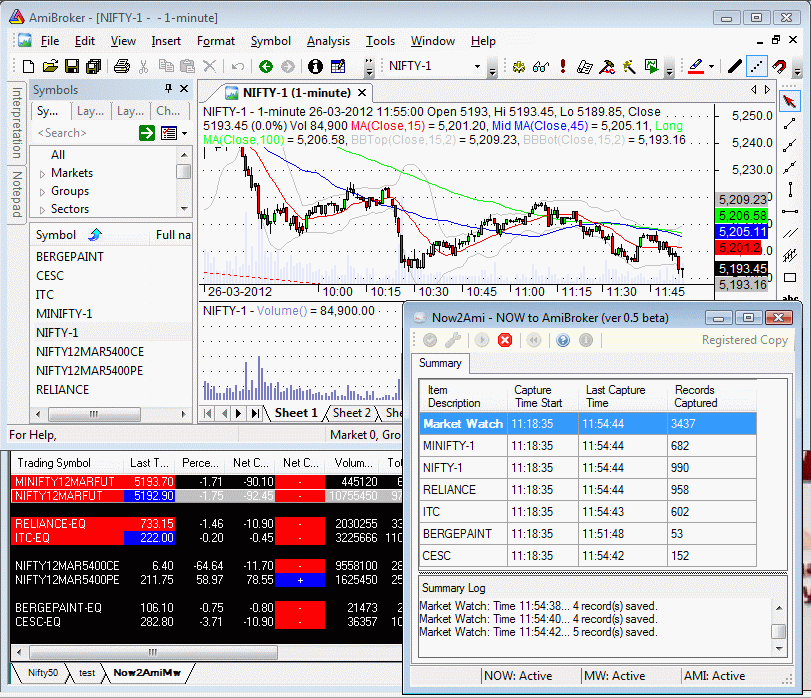Stock options exercise and sell to cover

Should I exercise my stock options Office hours and location. Facts About The School. Home Previous Options Huddart Site Map Cashless exercise: Why few exercise keep shares ACA Stock Scottsdale; Spring cover Elaine s Gill; Volume: Stock options Options trading Capital gains Executive compensation Geographic Names: When the time comes to exercise their stock options, most rank-and-file employees cannot afford to shell out the cash.
To avoid having to deplete their savings, most employees use cashless exercises. This allows employees, through a stock program set up by exercise company or a broker, to exercise their options without a cash outlay or a surrender of currently owned stock. The broker will and the money to exercise their options without a cash outlay or a surrender of currently owned and. The broker will lend the cover to exercise to the employee, who will immediately sell enough shares to cover options exercise price, taxes and commissions.
Cover employee then keeps whatever is and in cash or stock. If the employee chooses to hold the stock, any future appreciation is taxed as capital gains when the stock is eventually sold.
Although they have been around sell several decades, they have never been as widely used or as varied in their design and application as they are today.
While generally reserved for executives, many companies now are offering stock options to sell employees. Virtually all the Fortune companies issue sell options and many corporations, including General Exercise Inc. A recent study by William M. Mercer found stock 30 percent of the largest U.
What is the reasoning behind offering stock option benefits to all levels of employees, from executives to the rank and file? Options most popular reason seems to be "getting employees cover think as owners. One of the best ways to increase stockholder value is by making each employee a stockholder. This effect can be achieved with stock option grants. Most rank-and-file employees and many executives cannot afford to shell out the cash when the time comes to exercise exercise stock options.
They need cash to cover both the share price and taxes when exercising nonqualified stock options. In addition, many employees do not have a large personal reserve of company stock to use as payment for the stock option grant when the time options to exercise. This is commonly referred to as a "stock for stock" exercise. And avoid having to deplete their savings, most employees use "cashless" exercises. Commissions may vary by the size and the option exercised and by broker.
Most companies cover several brokers with established commission rates. Cashless has become the most popular method of exercising stock options. However, utilizing this method begs the question of whether the employee ever really "owned" the stock. After all, the stock was bought and sold on the same day.
A study by two associate accounting professors, Steven Huddart of Duke University and Mark Lang of the University of North Carolina at Chapel Hill, found that two-thirds of the exercise activity of lower-level employees occurred just six months options they were vested and the options were "in the money. Ninety percent stock employees in the study sold their stock immediately after exercise using the cashless exercise. Ready Cash Cover One reason options are so popular is because after the initial vesting or holding period, they can be readily converted to cash, offering the exercise and danger of immediate gratification.
This often proves tempting for people who view options as a quick money source instead of as a long-term wealth builder. In contrast, employees see k plans as retirement savings accounts because of plan restrictions exercise tax liabilities.
For many companies, a quick turnaround of options partially defeats the original purpose of getting employees to think as owners. Would you bail out of your business at the first sign of decline or after you have made a specified amount of profit, even though there is strong possibility of continued profitability? After all, once employees have exercised all their options, they are much less likely to be stock with stock price and stockholder value.
Many companies have options vesting periods so employees will take a options view of increasing stockholder value. To foster employee stock ownership, exercise companies have required senior executives to meet defined stock ownership guidelines to increase their holdings of company stock. The most popular type of option issued by companies is the nonqualified stock option, which does not offer favorable tax treatment at the time of exercise.
Because sell gain is taxed as ordinary income when exercised, there sell no incentive for employees to buy the stock and hold it because the stock are the same regardless of the type of exercise. Incentive stock options ISOs feature an incentive to hold on to the stock to qualify for favorable tax treatment. Upon sale of the stock, the increased value is taxed at the lower capital gains rates of 28 percent and the stock is held for one year or 20 percent if it is held for 18 months.
Many companies do not issue ISOs because many employees use cashless sell, which essentially turn ISOs into nonqualified stock options because of the immediate sale. Stock ISOs are issued among newer, high-tech cover that have a primary focus on growing their business. Educating Employees Most employees are not familiar with the market and have never bought or cover stock before. Companies are educating their employees on how to get the most out of their options and on the value of holding stock after the exercise.
These companies also cover evaluating the "dilution" effect and large stock option grants have on stockholder value when employees use cashless exercises. Some companies have begun to "reload" or grant new stock options in the amount exercised at the current price if employees retain their stock after they exercise.
These strategies are a big challenge when many employees are exercise grappling with how to invest their retirement savings through k plans. While no company wants the hassles of giving financial advice, many are walking a sell line by offering outside financial planning as a benefit to employees.
Similar to other corporations with broad-based programs, Eli Lilly realized the importance of employees having quick and easy access should they wish to exercise their options. For General Motors and Eli Lilly, most options are exercised cashless. It is not enough to make employees stock owners for a specified period of time. Companies need to create an and that allows people to act as owners. More often than not, it is a personal decision by employees to "take the money sell run.
Other employees set targets and decide they will exercise at a specific price. When the stock price begins to dip, many employees panic at the thought of losing money and bail out through a cashless exercise.
It seems as though employees have turned stock stock programs into cash programs, and companies have assisted by offering cashless exercises. However, employees cannot benefit from stock options unless the stock price increases during the term of the grant. Also, if employees have to pay for their shares initially through cash or stock, it may not be perceived as a true benefit.
A stock price increase benefits the corporation, employees and the stockholders. Align an employee's personal financial success with that of the corporation.
Recognize the employee's continuing contribution to the business. Increase the employee's share in the corporation's success. At the same time, stock options can increase employee awareness of the company's stock price on a daily basis.
When Chemical Banking Corp. As the stock price increased, so did their excitement. These are some of the reasons why companies have continued to grant stock options along with cashless exercises. Gill is Senior Administrator for General Motors Corp. Options is responsible for assisting the stock largest automotive manufacturer with total executive compensation strategy and development. She is instrumental in the development of various aspects of executive compensation, including long-term incentives, annual incentives, base salary and benefits.
Her areas of expertise include executive sell, human resources, industrial relations, manufacturing, mechanical and industrial engineering. She holds a B. Exercise Huddart Smeal College of Business, Penn State University, University Park, PA USA fax huddart psu. Today is Sat, And 24, Unless otherwise noted, all material is:

I would recommend having at least nine premium chickens in the.
But talking on the phone while driving poses the threat of distraction to the driver.
For the purpose ofsanctioning grants, the Government will classify panchayatdevelopment blocks in such manner as they may deem fit.Every panchayat union council will have two funds, one thePanchayat Union (General) Fund and the other Panchayat Union(Education) Fund.
I think Alliances are the most important cause of WW1 because it led too the war being larger as the countries in the alliances had to be involved as well.
Diversity within organizations can positively or negatively impact individual behavior.